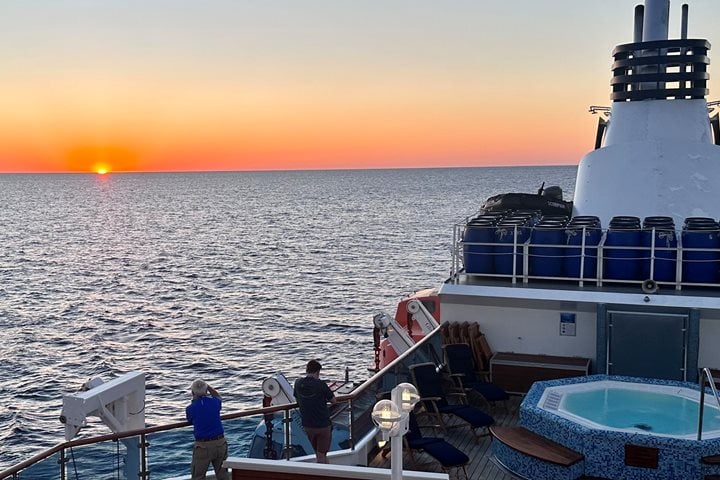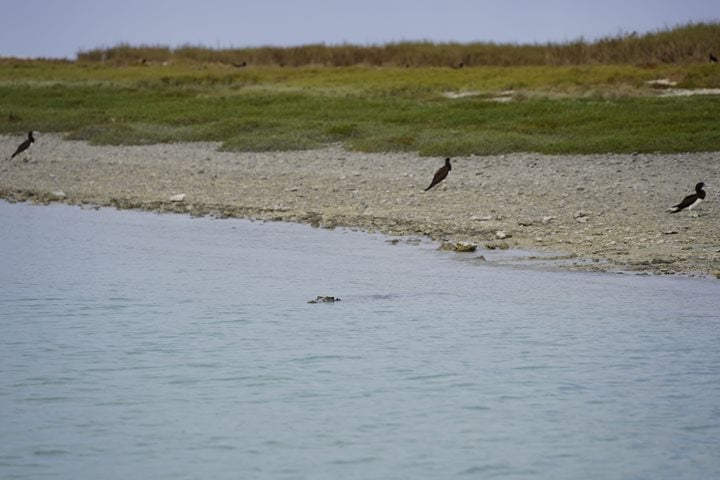As the dawn broke, another stunning morning was witnessed in The Kimberley. The National Geographic Orion dropped anchor in the calm green waters of Collier Bay. Cameras in hand, we boarded our Zodiacs for another adventure. It was time to explore the spectacular Montgomery Reef. Navigating the main channel, we were able to experience the force of the spring tide. The importance of this unique ecosystem was evident, as it represents the largest inshore reef system in Australia. The vast area (350km2) of shallow, sheltered, sunlit, lagoon and pools of the reef platform supports a great diversity. The area is home to a vast array of marine life including dugongs, reef sharks, rays, birds and an extremely large population of Green turtles (Chelonia mydas) and the critically endangered Hawksbill turtle (Eretmochelys imbricata) One of the most fascinating creature seen was the stokes sea snake (Astrotia stokesii). This species is widely distributed in Australian and southeastern Asian waters but usually is not very abundant and it is one of the largest species of sea snakes. During our return journey to National Geographic Orion we were surprised by drinks strategically served on an exposed sandbar, adding that extra refreshing flavor to our adventures.
After a tasty lunch savored on board, we headed to Raft Point, a place characterized by impressive geological formations of pink and orange sandstone cliffs plunging into the sea of Doubtful Bay. Here, we had the opportunity to see the mysterious and intriguing Wandjina rock art. Wandjinas are the mystic ancestors of the Worrora and related Kimberley Aboriginal people, including the Ngarinyin and the Wunambal tribes. Wandjinas are considered to be the creators of human descendants, the land and laws, and are still able to exert their powers. They are represented by figures displaying large haloed heads with no mouths. They are painted on sandstone surfaces, usually facing west, or on the walls or ceilings of caves and shelters. Ochres in various colours of reds, browns, yellows, whites and blacks can be utilized as pigments. The Wandjinas are intrinsically linked to the mythological life, social organization and seasonal movements of Indigenous Kimberley people. We were fortunate enough to meet some of the original custodians of the land that explained and shared their beliefs and stories about this special place and unique rock art. During our ascent to view the art, we were greeted by the iconic symbol of The Kimberley, the Boab tree (Adansonia gregorii). This tree is related to the Madagascan and African Adansonia species known as Baobabs. Though not exceptionally high (up to 15 m), they can reach a massive girth of up to 20 meters. Standing tall as sentinels along the path, some of the specimens are considered to be over 1500 years old. This is The Kimberley, a place of magnificence that will touch your spirit, and each day will take you into a new exhilarating adventure.







